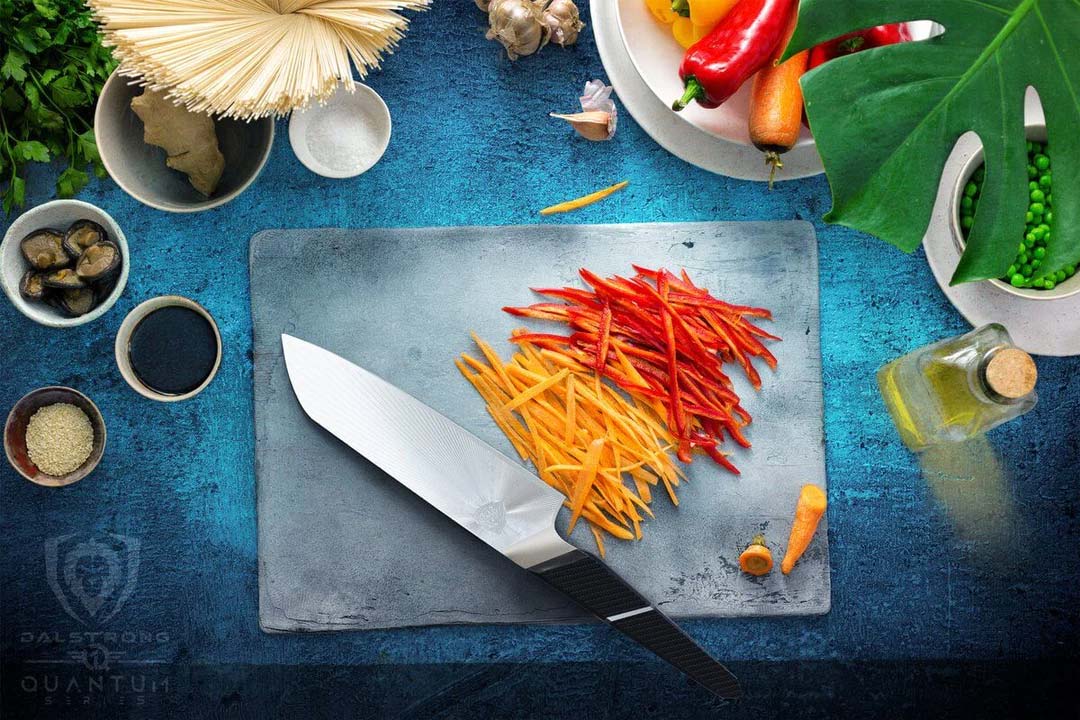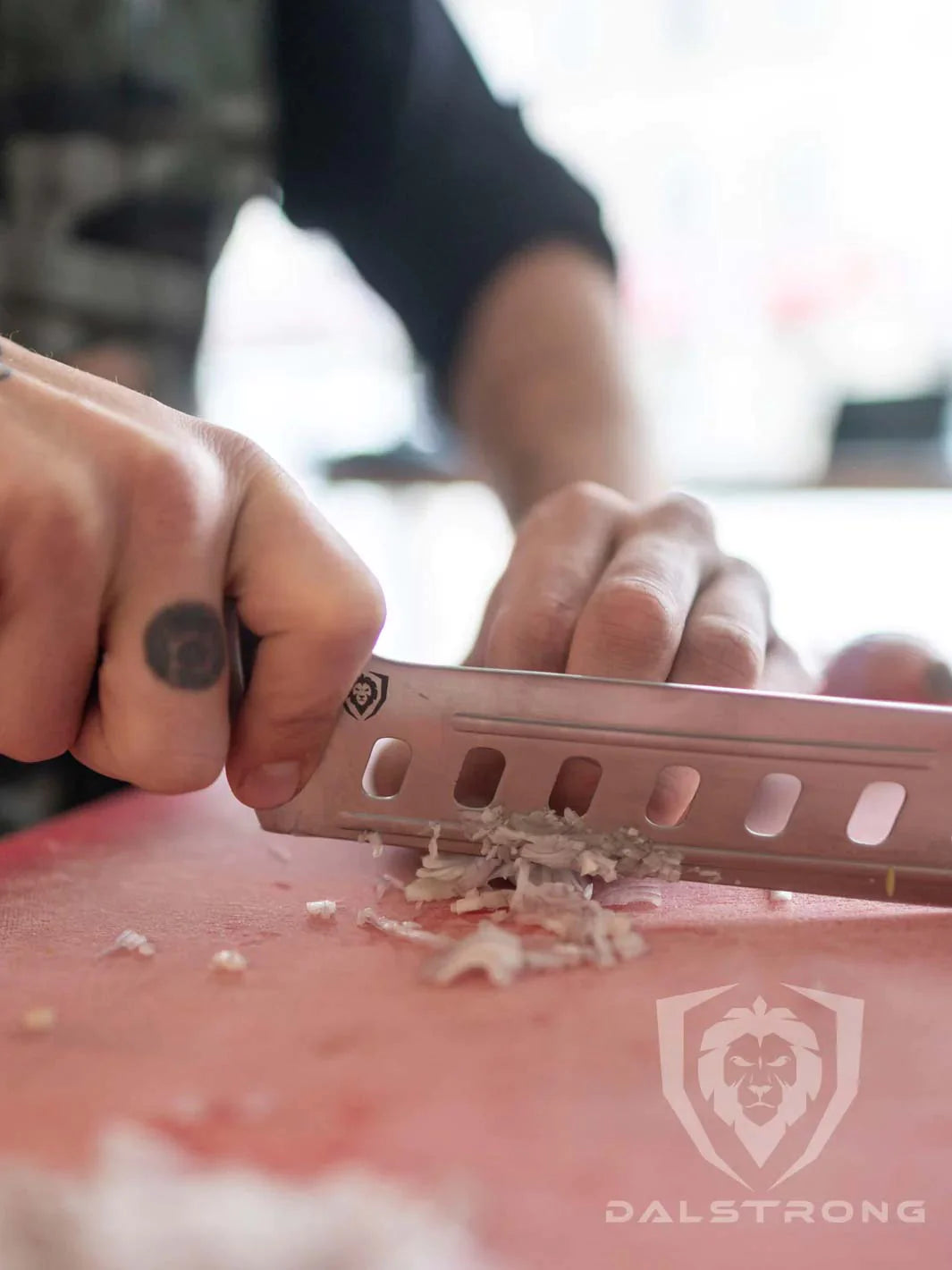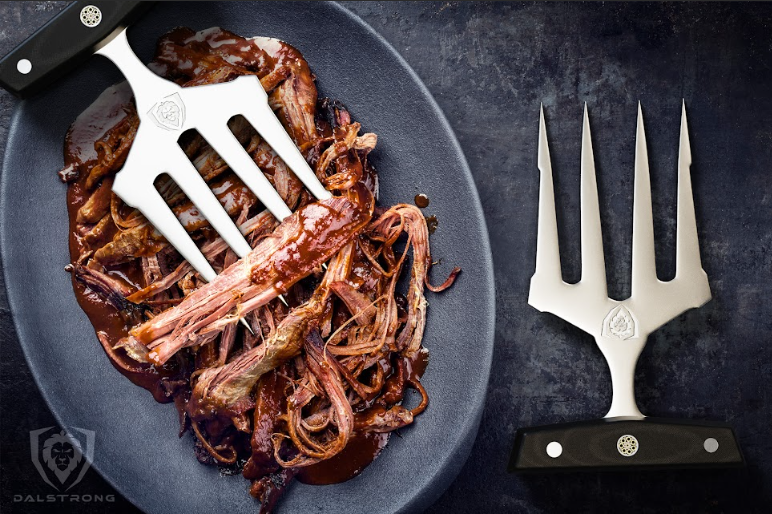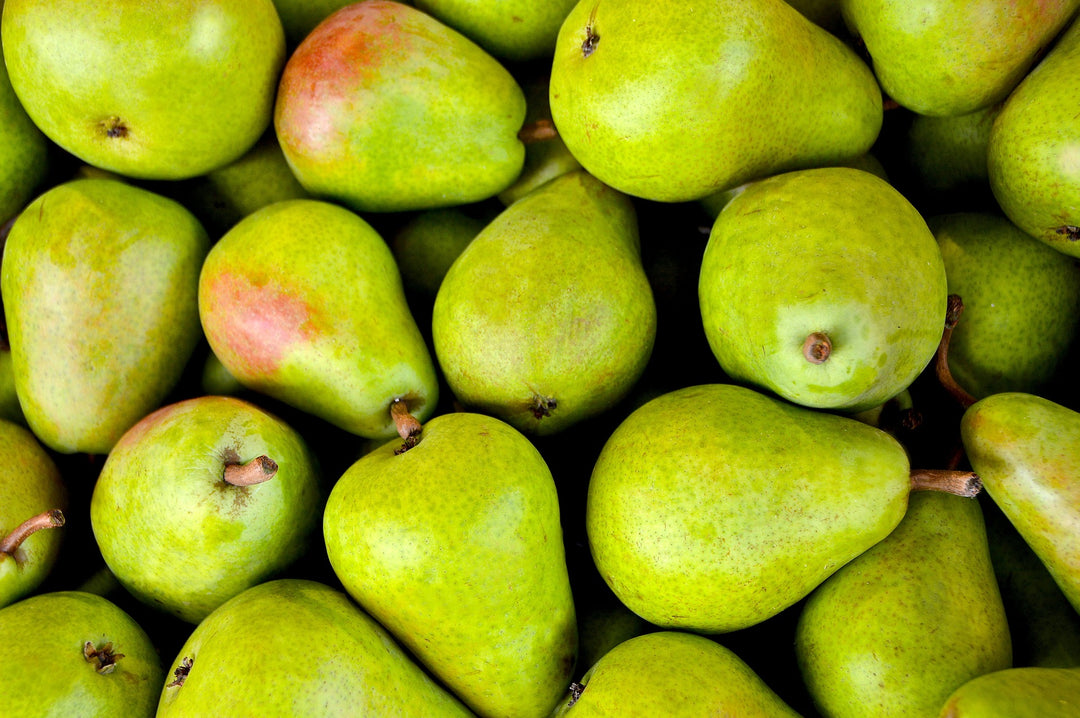How To Butcher A Chicken With Confidence
 Gladiator Series Chef's Knife 8"
Gladiator Series Chef's Knife 8"
QUICK OVERVIEW: How To Butcher A Chicken
- Gather the necessary tools
- Prepare your workspace
- Start with a whole chicken
- Remove the legs
- Separate the wings
- Remove the backbone
- Split the chicken in half
- Trim excess fat and remove the giblets (optional)
- Rinse and dry the chicken
- Store or cook the chicken
Being able to butcher a chicken with confidence and precision, and transforming it from a whole bird into inviting cuts ready to be transformed into delicious dishes is a next-level skill you'll want to unlock. Whether you're an aspiring chef or a curious home cook, mastering the art of chicken butchery opens up a world of culinary possibilities.
So, grab your knife, put on your apron, and let's dive into the interesting journey of learning how to butcher a chicken like a pro! Get ready to unleash your inner butcher and discover the joys of handling poultry with skill and finesse.
1. Preparation, Tools & Equipment You Need
Before diving into the world of chicken butchery, it's crucial to gather the necessary tools in your workspace properly when preparing the chicken. Here's a rundown of what you'll need:
Cutting Board
Choose a sturdy and spacious cutting board that provides ample space for maneuvering the chicken and collecting any juices or scraps.
Sharp Chef's Knife or Poultry Shears
Invest in a high-quality, sharp knife or specialized poultry shears. A chef's knife offers versatility, while poultry shears can make specific cuts easier. Ensure your knife or shears are well-maintained and sharpened for smooth, precise cuts.
Clean Work Surface
Sanitize your workspace thoroughly before starting. Cleanliness is of utmost importance to prevent cross-contamination and ensure food safety.
Bowl or Container
Keep a bowl or container nearby to collect giblets if you plan to use them or discard them separately.
Paper Towels or Clean Cloth
Have some paper towels or a clean cloth on hand to wipe surfaces, pat the chicken dry, or clean your hands during the entire process.
Optional: Apron and Gloves
Wearing an apron helps protect your clothing from any potential mess, while disposable gloves can provide an extra layer of hygiene and safety.
Remember, practicing good sanitation practices throughout the process is essential to prevent foodborne illnesses. Wash your hands thoroughly with soap and water before and after handling raw poultry, and ensure all tools and surfaces are clean to minimize any risks.
Now that you're well-prepared and equipped with the necessary tools, it's time to embark on your chicken butchery journey with confidence and enthusiasm!
2. How To Butcher A Chicken Step-By-Step
Gladiator Series Chef's Knife 8"
Butchering a raised chicken requires some knowledge and skill to ensure that it's done safely and efficiently. Here's a general guide on how to butcher a chicken:
Note: It's important to follow proper sanitation practices and use clean tools when processing chickens to avoid contamination and foodborne illnesses.
- Preparation. Ensure your workspace is clean and sanitized. Gather all the necessary tools and ingredients and place a clean cutting board on your workspace.
- Secure the chicken. Place the whole chicken on the cutting board breast-side up.
- Remove the feet and legs. Hold the leg firmly and cut through the skin and meat between the leg and the body. Once the skin and meat are cut, bend the leg backward until the joint pops out. Cut through the joint and pull the leg from the body. Repeat the process on the other side to remove the feet and second leg.
- Separate the wings. Hold the wing tip out and cut through the skin and meat where the wing meets the body. Apply pressure to the joint until it pops out. Cut through the joint by removing the wing from the body. Repeat the process on the other side to remove the second wing.
- Remove the backbone. Place the chicken breast meat side down. Starting from the tail end, use a sharp knife or poultry shears to cut along one side of the backbone. Continue cutting until you reach the chicken's neck, removing the entire backbone. Discard or save the backbone for making chicken stock.
- Split the chicken in half. Flip the chicken over so it's breast-side up. Press down on the breastbone firmly to flatten it. Use your knife to cut down the center of the chicken, splitting it into two halves. Alternatively, you can cut the chicken into quarters by cutting each half in half again.
- Trim excess fat and remove giblets (optional). Trim any excess fat or pull the skin from the chicken as desired. If desired, reach into the cavity of the chicken and gently pull out the giblets (internal organs). Save the giblets for other uses or discard them.
- Rinse and dry the chicken. Rinse the chicken pieces under cold water to remove any blood or bone fragments. Pat them dry with paper towels or a clean cloth.
- Store or cook the butchered chickens. Store chicken pieces in airtight containers or freezer bags in the refrigerator for a few days, or freeze them for longer storage. Alternatively, you can proceed with cooking the chicken immediately.
It's essential to prioritize food safety and hygiene throughout the process. If you're unsure or new to chicken butchery and processing chickens, consider seeking guidance from an experienced butcher or referring to reliable sources for additional tips and techniques.
3. Recommended Dalstrong Tools You Can Use
1. Chef's Knife 8" Valhalla Series Dalstrong
The Chef's Knife 8" Valhalla Series by Dalstrong is a versatile and high-quality kitchen tool crafted to elevate your culinary experience. This knife is part of Dalstrong's renowned Valhalla Series, which fuses exceptional craftsmanship with premium materials.
PROS:
- Exceptional Quality: This knife is crafted with attention to detail and precision, ensuring exceptional durability and quality.
- It is made from high-carbon Thyssenkrupp German steel, known for its edge retention and strength.
- Comfortable Handle: The knife features an ergonomic handle designed for control and comfort. It is made from military-grade G10 Garolite, which provides superb grip even when wet, making it secure and safe to use for extended periods.
CONS:
- The craftsmanship and quality of the Chef's Knife 8" Valhalla Series come at a premium price.
2. Fillet & Boning Knife 6.5" Phantom Series Dalstrong
The Fillet & Boning Knife 6.5" Phantom Series by Dalstrong is a special kitchen knife crafted for accurate boning tasks and filleting. It is known for its exceptional cutting-edge design and craftsmanship.
PROS:
- The 6.5-inch blade of this knife is carefully engineered for filleting tasks, allowing you to effortlessly take out skin and bones from poultry, fish, and other meats.
- The Phantom Series Fillet & Boning Knife is skillfully crafted using high-carbon Japanese AUS-8 steel, famous for its durability, strength, and edge retention.
- The Phantom Series is well known for its modern and sleek aesthetic, and this boning and fillet knife is no exception. Its refined design makes it a stylish addition to any kitchen.
CONS:
- As a specialized boning and fillet knife, its primary use is for accurate tasks such as filleting and deboning. It may not be as versatile for other general kitchen tasks.
- The 6.5-inch blade may not be perfect for larger cuts of meat bird or tasks that need a longer blade length.
3. Lionswood Colossal Teak Cutting Board Dalstrong
The Lionswood Colossal Teak Cutting Board by Dalstrong is a premium cutting board created to boost your culinary experience. Crafted from high-quality teak wood, this cutting board provides a functional and durable surface for all your cutting and food preparation needs.
PROS:
- The Lionswood Colossal Cutting Board is crafted from 100% natural teak wood, known for its extraordinary durability.
- Teak wood is resistant to warping, moisture, and cracking, making it a long-lasting and reliable pick for a cutting board.
- Its big dimensions lets you to easily handle and work with even the biggest ingredients.
CONS:
- With its solid large size and construction, the cutting board can be quite heavy.
4. Curved Boning Knife 6" Firestorm Alpha Series Dalstrong
The Curved Boning Knife 6" Firestorm Alpha Series by Dalstrong is an accurate knife designed particularly for trimming and boning tasks in the kitchen. Part of the Firestorm Alpha Series, this knife combines exceptional performance with cutting-edge technology.
PROS:
- The curved blade of this knife is artfully designed to steer around contours and bones, making it ideal for precise trimming and boning.
- Features a high-carbon German stainless steel blade, known for its sharpness, strength, and resistance to staining.
- The knife is equipped with an fitting handle designed for control and comfort during prolonged use.
CONS:
- If you need a more all-around knife that can operate a wider range of slicing tasks, a straight boning knife might be a better option.
- It is crucial to consider the size of the tasks you regularly perform in the kitchen before picking this knife.
5. Butcher & Breaking Knife 8" Shogun Series ELITE Dalstrong
The Butcher & Breaking Knife 8" Shogun Series ELITE by Dalstrong is a professional-grade knife crafted for intensive tasks in the kitchen. Part of the prestigious Shogun Series ELITE, this knife unites outstanding performance with exceptional craftsmanship.
PROS:
- It easily tackles big cuts of meat chicken, fish, and poultry, making it a perfect tool for chefs, butchers, and anyone working with substantial chunks of protein.
- It features a full tang design for maximum stability and strength, and the blade is hand-finished with an impressive Tsunami Rose Damascus pattern, making it a visually striking piece.
- It is crafted with military-grade G10 Garolite, providing an ergonomic and firm grip even in slippery conditions.
CONS:
- It may need some adjustment for those people that are used to lighter sharp knives or accurate maneuverability.
4. Frequently Asked Questions
How do you butcher raw chicken?
Chicken butchering requires breaking down the chicken into smaller, more doable pieces for cooking.
How do you know when to butcher chicken?
Getting ready to butcher a chicken at the right time is essential. There are different classes of chicken (either egg laying hen, locally raised chicken, or chickens from factory farms), and are best slaughtered at certain times. Examples are; broilers or fryers birds are slaughtered when they weigh 3 to 5 pounds, cornish game hens at 5 weeks of age, and roasters at 12 weeks or longer.




















































































































































































































































